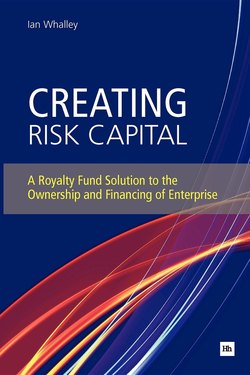Читать книгу Creating Risk Capital - Ian Whalley - Страница 18
На сайте Литреса книга снята с продажи.
The enterprise
ОглавлениеOne of the key features of a country, and a measure of its strength and diversity, is the number and quality of enterprises to be found there. Thus, in the major market economies, such as those of the UK, USA and mainland Europe, there is an immense number of enterprises and there is also much diversity in their nature, scale, form and quality.
In the UK, for example, the number of private sector enterprises has been estimated at over 4.8 million, employing an estimated 22.8 million people. [3] Alongside business firms there are many non-profit enterprises, mutual and co-operative organisations, such as building, friendly, industrial and provident societies, and credit unions; insurance societies; housing associations; colleges and universities; trusts and charities; societies and clubs; and employee-owned enterprises such as the John Lewis Partnership, the department store and supermarket group. There is also a very substantial public sector with enterprises ranging from schools and hospitals at one level to larger organisations like the BBC and, the largest of all, the National Health Service (NHS).
The position is similar in other major countries. In the USA, for example, there are literally millions of small, private sector business firms and a few very large ones. Alongside these, co-operative, mutual, employee-owned and non-profit enterprises play a major role in mainstream industries. To these may be added official federal or state-owned organisations, often set up for specific purposes, like the Small Business Administration (SBA).
Enterprises are rooted in social and civic life, as is clearly shown by the origin of the terms which describe their main forms: in medieval Florence, for example, the societas and the compagnia, whose members took bread together, from the Latin cum and panis; [4] and in Venice the fraterna and colleganza. Similar terms, like société and compagnie in France, and Gesellschaft (society) in Germany, are still used for the company today.
The vast majority of enterprises are small and local, but a few develop over time into major national and world enterprises, like Unilever, Shell and Microsoft, and sometimes even into whole industries. The financial theorist and historian William Bernstein quoted an example of a group of dairy farmers in Hjedding in Denmark, who in 1882 organised a co-operative to buy expensive machinery and jointly sell their cream and butter. This model was widely copied and became hugely successful, forming the cornerstone of Danish prosperity in the following century. [5]
In Britain, enterprises have begun in many different ways: for example as individual business initiatives; in persecuted and refugee communities like the Quakers, the Huguenots, and more recently the Asians from East Africa; as self-help mutual clubs and societies; as trusts and charities; and as initiatives of the state.
